Chengdu Research Base of Giant Panda Breeding is located at No. 1375, Panda Avenue, Chenghua District, Chengdu City, Sichuan Province. It is a national 4A-level tourist attraction, a world-renowned ex-situ conservation base, scientific research and breeding base, public education base, and educational tourism base for giant pandas. Meanwhile, it is also the "Ecological Demonstration Project for Ex-situ Conservation of Giant Pandas". The base has gained a global reputation for its dedication to protecting and breeding giant pandas, red pandas, and other endemic endangered wildlife species in China. It covers a total area of 3,570 mu, with the expanded area accounting for 2,535 mu. Inside the base, the giant panda delivery rooms, breeding areas, scientific research centers, and panda hospitals are rationally laid out, and there are also multiple panda "villas" scattered among the mountains and forests. The entire base follows and retains the original topographical features, utilizing mountain gullies and streams to form a multi-level landscape belt of mountain valleys. Based on the panda-themed characteristics, it is generally divided into the Panda Valley Area, Panda Dense Forest Area, Panda Reception Hall, and Panda Villa Area.
History and Culture
In the 1980s, the Fargesia bamboo in the Qionglai Mountains bloomed and withered, leaving some giant pandas starving due to food shortage. These pandas were rescued and concentrated in Chengdu Zoo. In 1987, the Chengdu Municipal People's Government decided to establish the Chengdu Research Base of Giant Panda Breeding, adopting a management model of "one team, two names" together with Chengdu Zoo. The base broke ground in March of the same year and was completed in 1988. After three phases of construction, it successively built giant panda enclosures, playgrounds, feed rooms, laboratories, veterinary hospitals, as well as water supply, power supply, communication and other facilities. Thus, it became a demonstration base for the ex-situ conservation of giant pandas, specializing in the captive breeding, reproduction, disease prevention and control of giant pandas, as well as related scientific research and popular science education. After 1990, the Chengdu Base and Chengdu Zoo became two independent entities.
In October 1991, the second phase of the expansion project of the Panda Base started and was completed in 1995, building a giant panda habitat that simulates the wild ecological environment. In 1992, the construction of the Chengdu Giant Panda Museum within the base began. In 2000, the base took the lead in carrying out public conservation education work in the national wildlife protection system and established the Popular Science and Education Department. On October 1, 2014, the "Panda Valley" (Dujiangyan Wild Release and Breeding Research Center of Chengdu Research Base of Giant Panda Breeding) was opened to the public for a trial run, and officially opened on April 20, 2015.
In 2019, the first meeting of the Chengdu Urban Planning Commission reviewed and approved the overall planning and conceptual planning scheme of the "Panda Metropolis". In August of the same year, the new building of the Chengdu Giant Panda Museum in the base began the exhibition layout and construction, and officially opened to the public on March 3, 2021. In September 2019, the expansion project of the Chengdu Research Base of Giant Panda Breeding started. After the completion of the expansion project in 2021, the total area of the base was further expanded. In March 2021, the official LOGO of the Chengdu Research Base of Giant Panda Breeding was released. On January 1, 2022, the expanded area of the Chengdu Research Base of Giant Panda Breeding was put into trial operation for pre-opening.
Major Attractions
Chengdu Giant Panda Museum
It is the world's first interactive exhibition with the theme of giant pandas. The exhibition systematically introduces the evolutionary history of giant pandas, their distribution overview (ancient and modern), and their wild ecological habits. Visitors can also experience the "Panda Doctor" VR surgery simulation, which helps people gain a comprehensive understanding of giant pandas and their living environment.

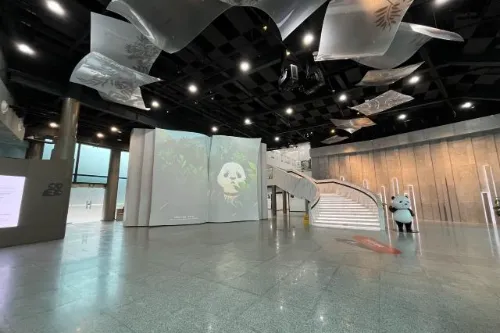
Panda Valley Area
There are 7 giant panda enclosures distributed here, including 4 circular enclosures and 3 pebble-shaped enclosures. The names of the enclosures are "Shanyue Pavilion", "Yunyue Pavilion", "Qiuyue Pavilion", "Wangyue Pavilion", "Mingyue Pavilion", "Jiangyue Pavilion" and "Lanyue Pavilion". Among them, the 4 circular enclosures are relatively concentrated in location, and a large number of giant pandas often gather here.
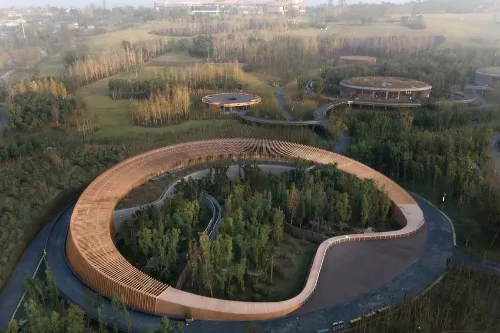
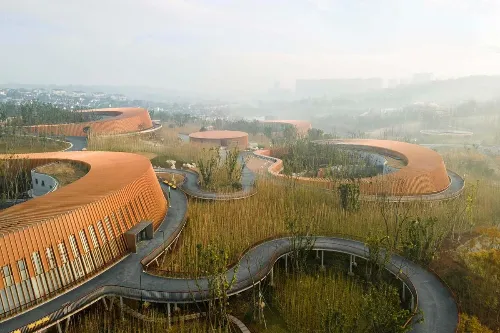
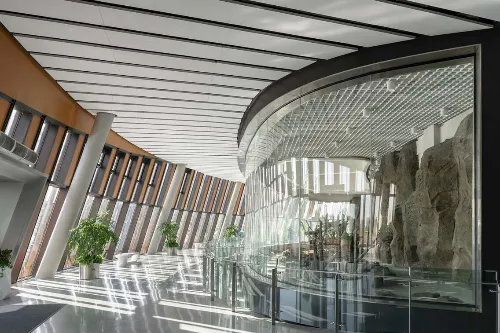
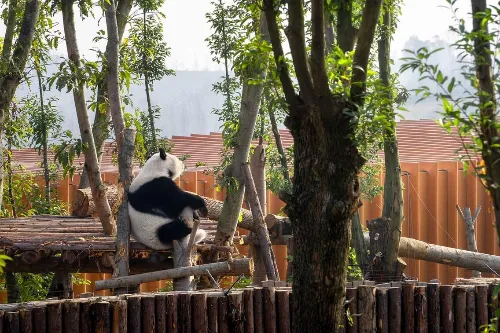
Panda Tower
As a landmark building, it is 69.8 meters high with 9 floors. The tower is shaped like bamboo shoots after rain, and the floor space uses hibiscus flowers as guides. Climbing the tower allows visitors to have a bird's-eye view of the entire Panda Base.
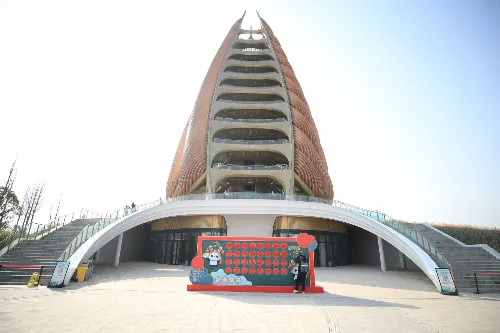
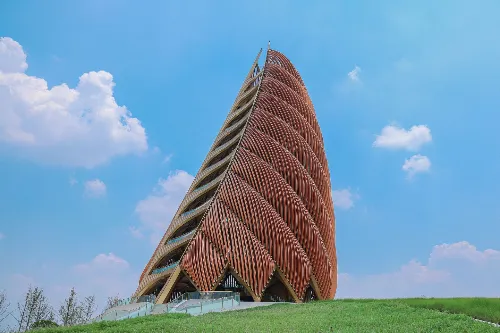
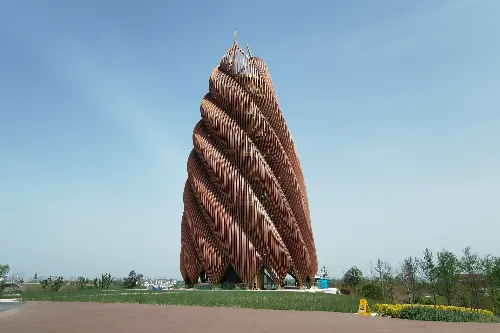
Giant Panda Sun Delivery Room
This is the living area for young giant pandas. If visitors arrive before 9:00 a.m., they can take photos of the cute scene of panda cubs climbing on wooden frames. At 9:30 a.m., there are also free volunteer explanations about the stories of the delivery room.
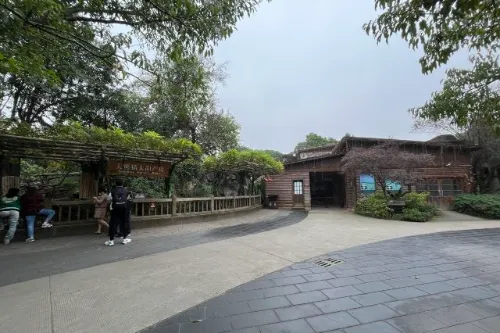
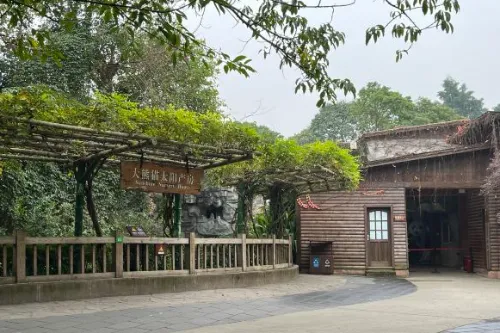

Giant Panda Moon Delivery Room
It is the core area for breeding giant panda cubs, known as the "cradle of birth" and "paradise for growth" of panda babies. This area provides a constant temperature, safe and comfortable environment for giant panda mothers and their cubs, and is equipped with a professional medical and breeding team.
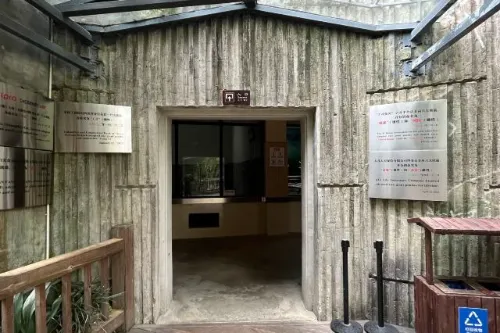
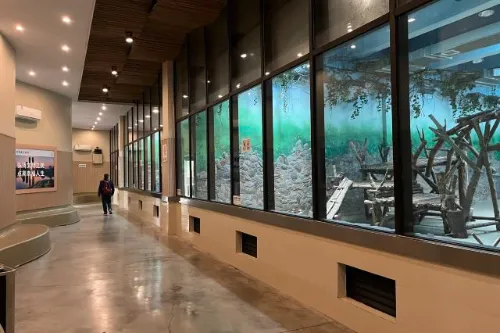

Giant Panda Star Delivery Room
It is the living area for giant panda mothers with their cubs and young giant pandas. There is a large circular exhibition hall in the enclosure, allowing visitors to observe the daily life of giant panda mothers and cubs from a 360-degree perspective. There are also stepped seats next to the hall.
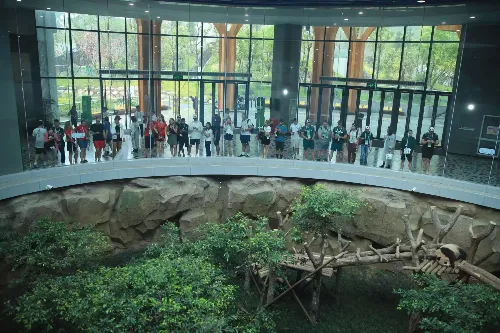
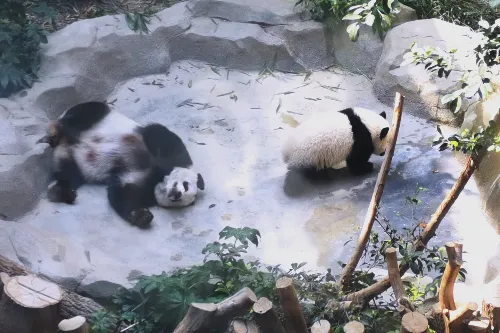
Red Panda No. 2 Activity Area
It is a free-ranging area for red pandas, where visitors can observe red pandas at close range. The activity area has a supplementary feeding time from 14:00 to 15:00 every day, during which visitors can take photos of the cute scene of red pandas standing upright to eat apples.
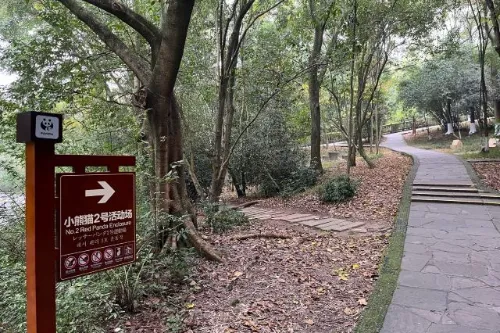
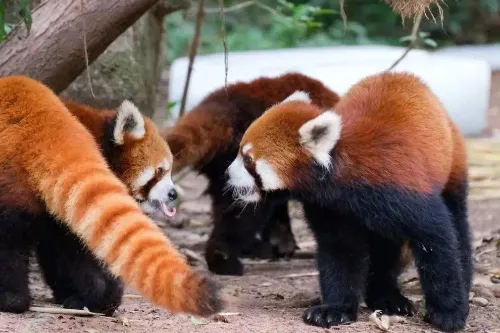

Giant Panda Villa No. 1
It is a classic area for observing the natural life of adult giant pandas at close range. This area simulates a wild habitat, with an open-air activity ground, wooden climbing frames and a pool shaded by bamboo forests.
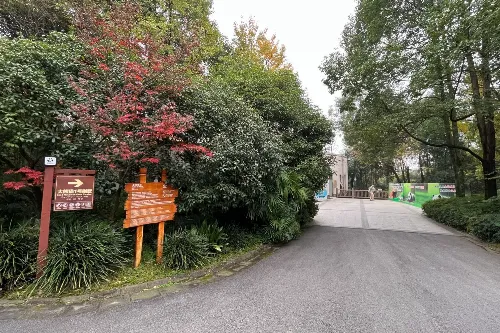
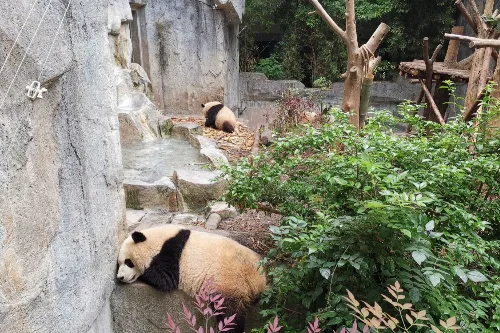
Swan Lake
As a distinctive man-made lake, it is home to various bird species such as white swans, black swans, mandarin ducks, and ruddy shelducks. Designed and planned from the perspective of respecting nature and protecting the environment, it has earned the reputation of being "Chengdu's Best Bird-Watching Base".
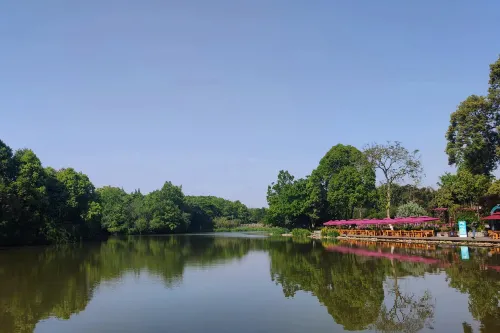
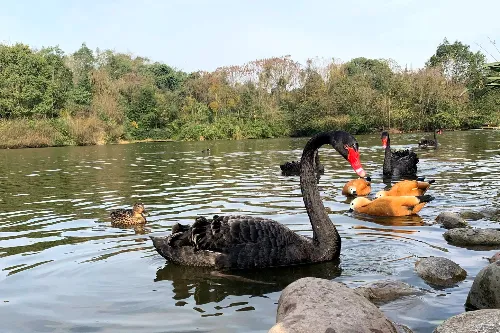
Recommended Tour Routes
If entering from the South Gate, the recommended route is: Panda Bronze Statue → Giant Panda Villa No. 7 → Giant Panda Villa No. 5 → Giant Panda Villa No. 6 (closed on Mondays) → Giant Panda Sun Delivery Room → Red Panda No. 2 Activity Area → Chengdu Giant Panda Museum (closed on Mondays) .
If entering from the West Gate, an optional route is: Lanyue Pavilion → Jiangyue Pavilion → Mingyue Pavilion → Wangyue Pavilion → Yunyue Pavilion → Qiuyue Pavilion → Shanyue Pavilion .
Due to the base's large area and numerous attractions, it is recommended that visitors allocate a full day for their tour. This allows for a more leisurely viewing experience of the lovely giant pandas and other animals, as well as a thorough appreciation of the base's charm .
Tour Tips
- Try to visit on weekdays or non-holidays to avoid peak crowds. This enables better viewing of giant pandas and reduces waiting times .
- Bring sun protection products and rain gear. Chengdu has changeable weather, so it is important to protect against the sun when the sunlight is strong and be prepared for rainy days .
- Wear comfortable sports shoes. As visitors need to walk long distances within the base, comfortable shoes will make the tour more relaxing .
- You can learn about the living habits and feeding times of giant pandas in advance. Visiting at the right time will allow you to see the giant pandas in a more active state .
- Keep quiet when watching giant pandas. Do not make loud noises to avoid disturbing them .
Notes
- Feeding giant pandas and other animals is strictly prohibited. The base has professional breeders responsible for feeding, and feeding by visitors may affect the animals' health .
- Using flash photography is forbidden. Giant pandas' eyes are relatively sensitive to light, and flash may cause harm to them .
- Follow the scenic area's tour route signs. Do not leave the designated routes at will to avoid damaging the scenic area's ecological environment or encountering dangers .
- Take care of your personal belongings. Keep valuable items such as mobile phones and cameras safe in crowded areas .
- Protect the scenic area's environment. Do not litter randomly and keep the scenic area clean and tidy .
Transportation
- Metro: Take Metro Line 3 and get off at Junqu Zong Yiyuan (Military Region General Hospital) Station (Exit B) or Xiongmao Dadao (Panda Avenue) Station (Exit A). Shuttle buses are available from both exits to the Panda Base gates (shuttle buses from Junqu Zong Yiyuan go to the West Gate, and those from Xiongmao Dadao go to the South Gate) .
- Bus: After arriving at Yuleilu Cuiweilu Kou Station, you can enter the scenic area from the West Gate .
Opening Hours
The base is open year-round. The entry time for morning tickets is 8:00 - 12:00; the entry time for afternoon tickets is 12:00 - 16:30 . Please refer to the scenic area's actual opening conditions on the day of your visit .
Tickets
The ticket price is 55 yuan per person.
You can search for the scenic area's official WeChat public account "Chengdu Research Base of Giant Panda Breeding" to get the latest updates or purchase tickets online.
Online Booking
Click here to jump to the Trip.com ticketing platform for ticket purchase.


